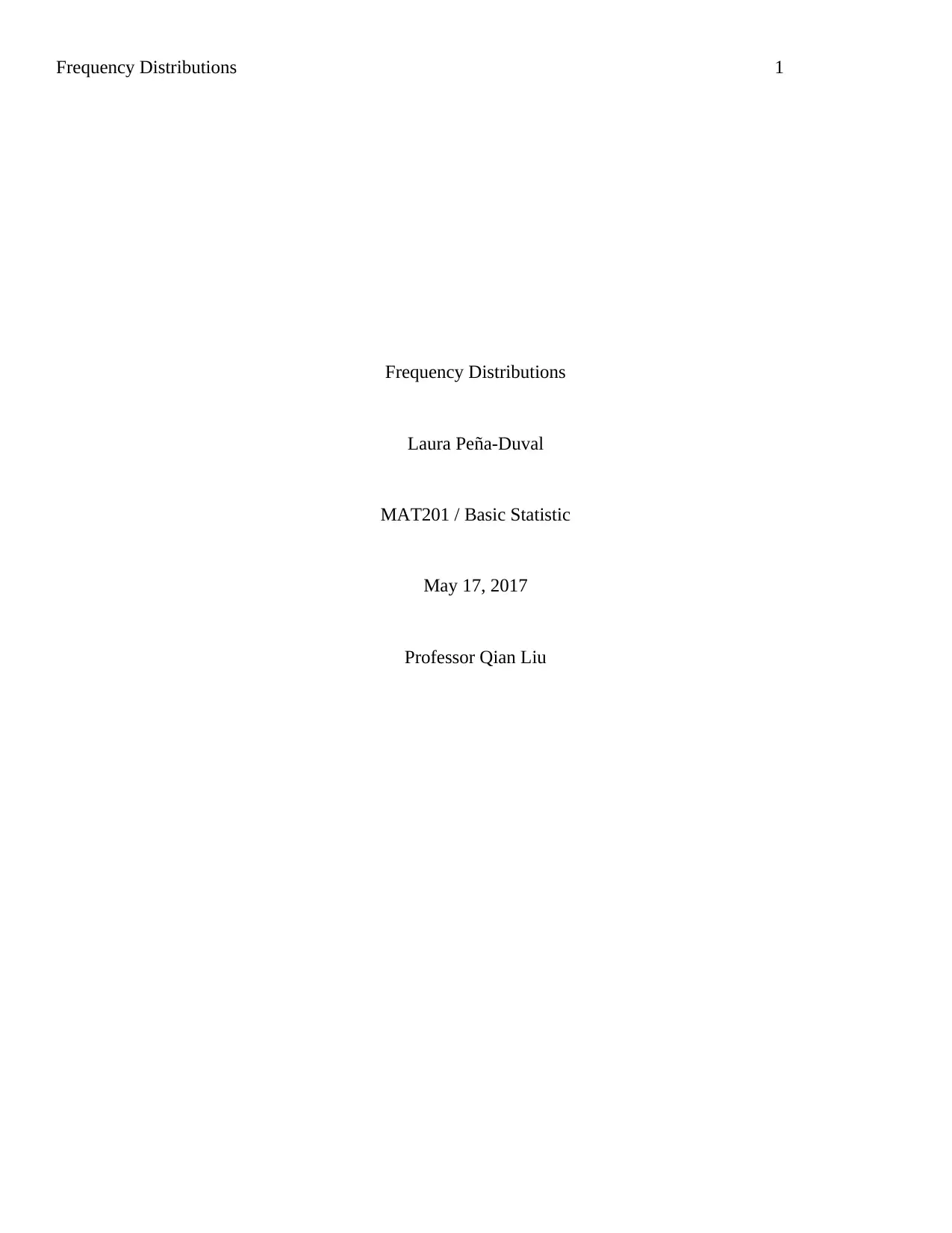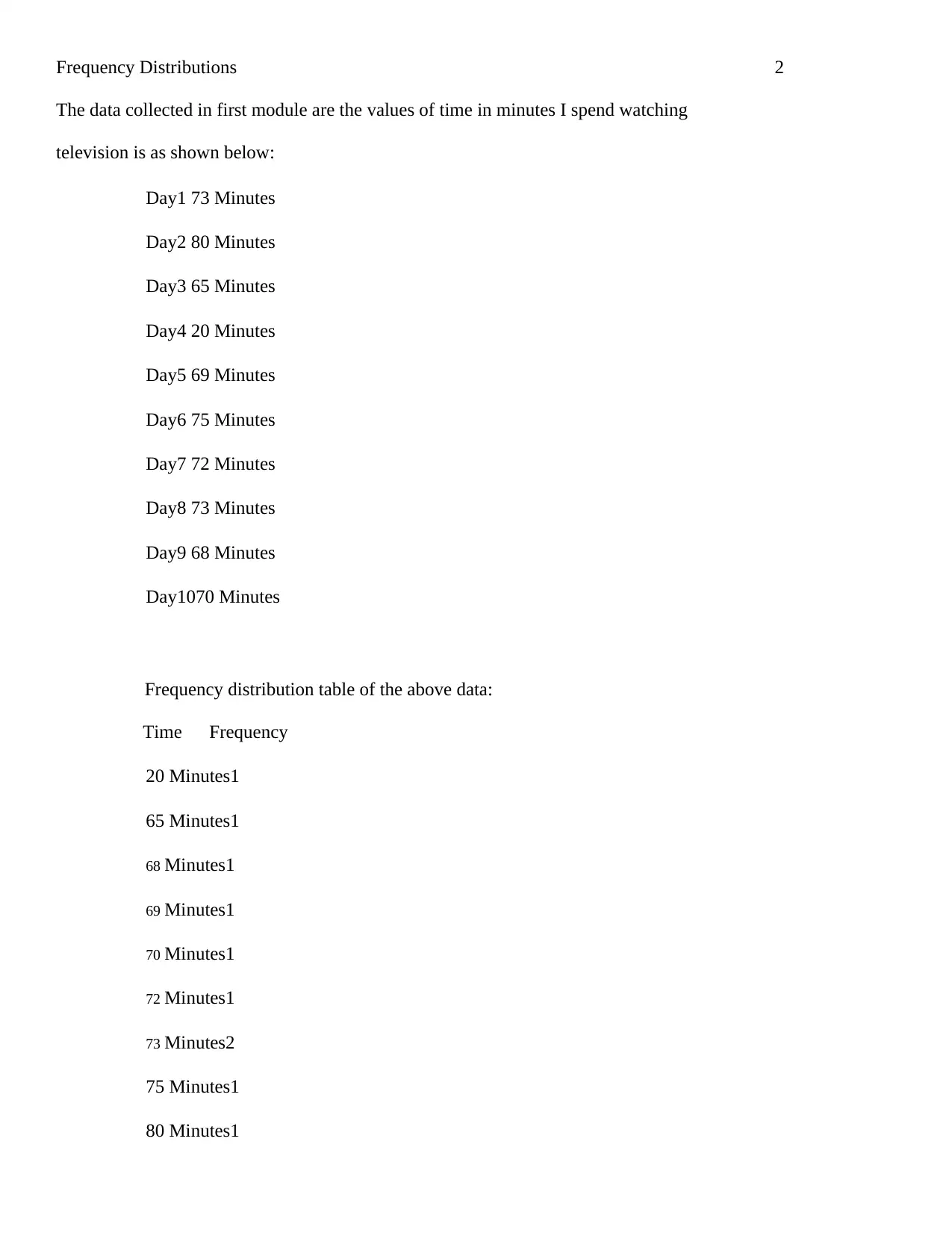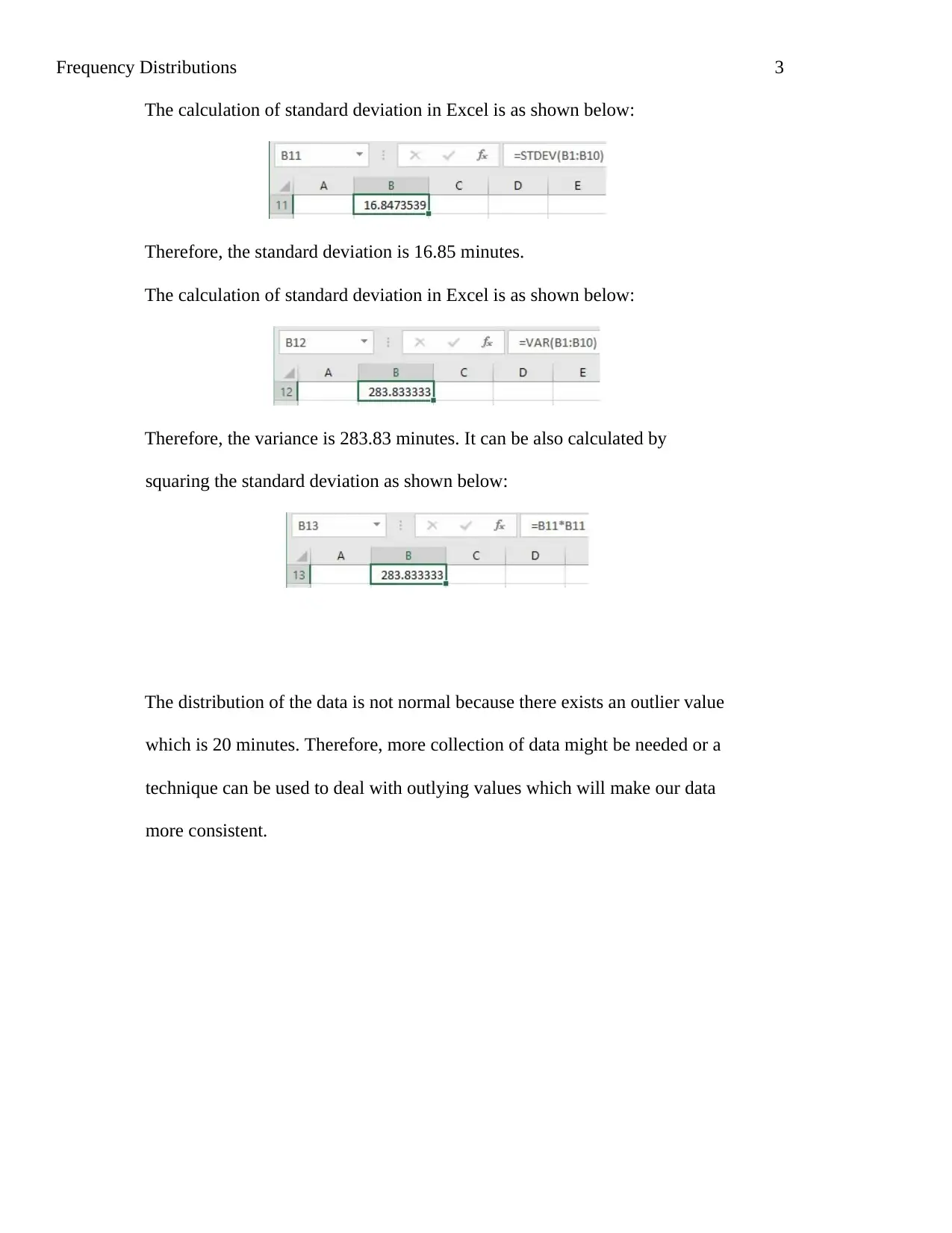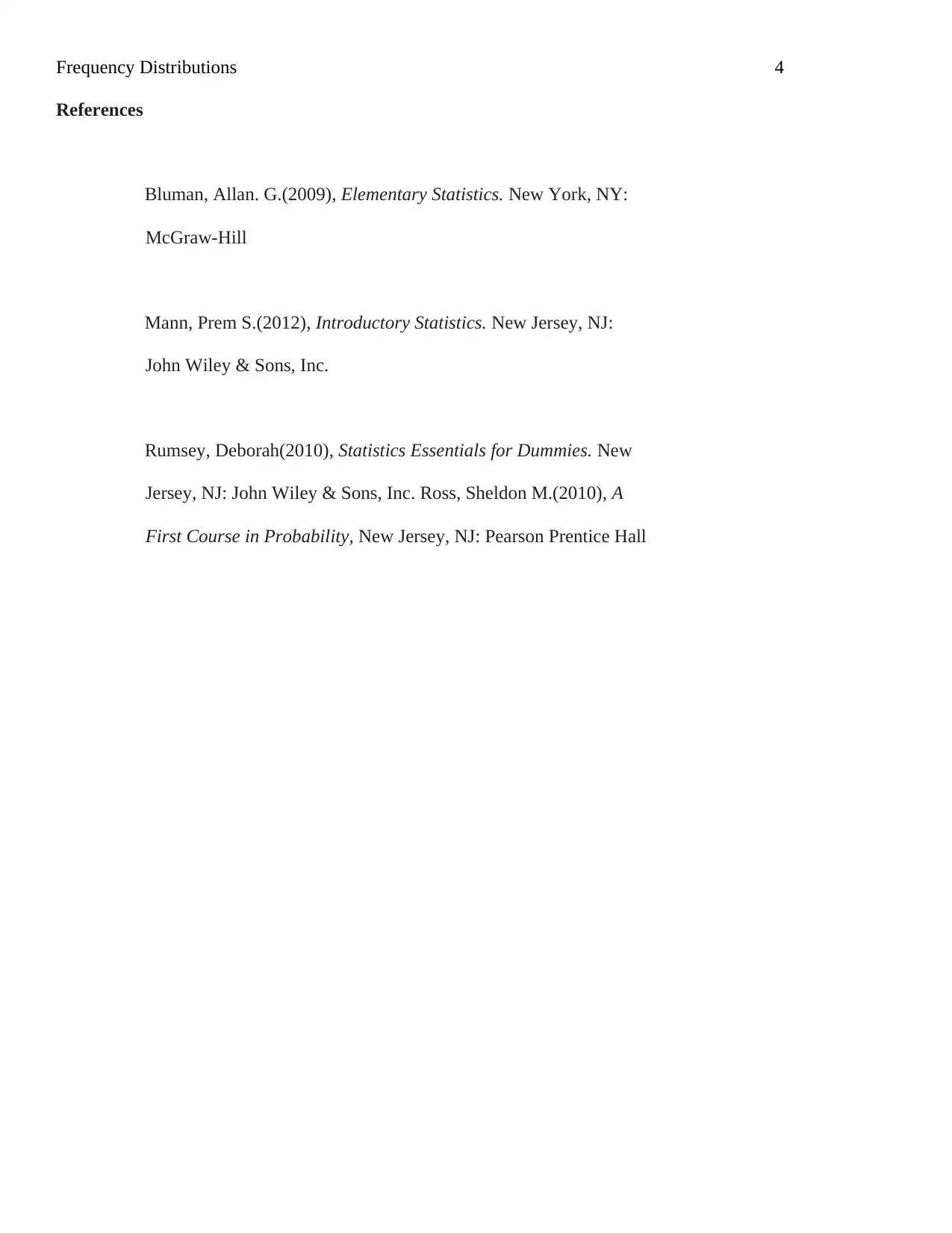Statistics Assignment: Frequency Distributions Analysis, Data
VerifiedAdded on 2019/09/23
|4
|280
|395
Homework Assignment
AI Summary
This assignment focuses on analyzing frequency distributions using a given dataset of television viewing times. The student calculates the standard deviation and variance of the data, demonstrating the use of Excel for these calculations. The assignment identifies an outlier in the data and discusses the implications of this outlier, suggesting further data collection or techniques to handle the outlier. The assignment concludes with a list of references including statistical textbooks and resources. The assignment provides a practical application of statistical concepts, highlighting the importance of data analysis and the identification of potential issues within a dataset.
1 out of 4











![[object Object]](/_next/static/media/star-bottom.7253800d.svg)